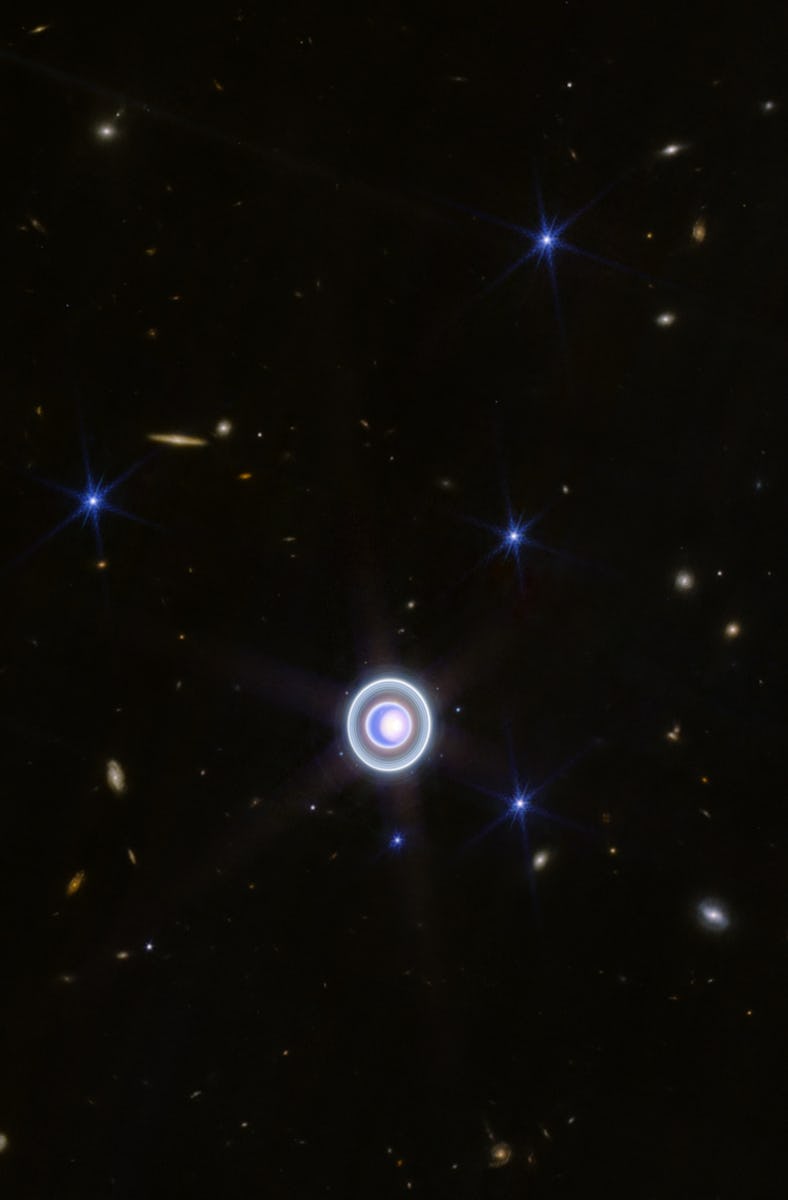New Webb Telescope Image Reveals Uranus In A Whole New Light
The joke never gets old.

The James Webb Space Telescope (JWST) just captured new images of Uranus in a whole new light: infrared.
In the wavelengths of light our eyes can see, Uranus can appear a bit, well, boring: a solid blue ball with very faint rings around it. But with JWST’s Near InfraRed Camera (NIRCam), which sees the universe in slightly longer wavelengths of light, all sorts of interesting details emerge, including swirling polar clouds, a planet-circling band of storms, and a larger number of delicate, ethereal rings.
The bright area on the right side of the planet is a cap of clouds that form over Uranus’s north pole as it tilts toward the Sun.
Uranus is More than the Butt of Punny Jokes
If you look closely at this image, you can see most of Uranus’s 27 moons, including some small once that waltz between the ice giant’s rings. This image even reveals the faint, innermost ring, called Zeta, which is very hard to see from Earth.
The bright spot on the right of the image is a cap of clouds that seem to gather over Uranus’s north pole as northern summer approaches and the planet’s orbit tilts the pole toward the distant Sun. Astronomers are still trying to figure out what causes this; they only noticed it back in April when JWST sent home the first infrared images of the planet. In the new images, we can see more bright spots — huge storm systems — dancing around the southern edges of the cloud cap.
You can see several of Uranus’s flock of 27 moons labelled in this image.
Here on Earth, we have seasons because our planet’s axis is tilted at a jaunty 23-degree angle, so for part of the year, one pole gets more direct sunlight and longer days, than the other. Uranus is tilted so far that it’s literally lying on its side. The reclining ice giant’s 98-degree axial tilt means that each pole spends 21 Earth years (a quarter of the Uranian year) pointed directly at the Sun — and another 21 years facing away from the Sun, immersed in a long, cold winter night.
Planetary scientists are hoping to learn how those long, extreme seasons shape weather patterns on Uranus, like the polar cloud cap and the ring of storms around its southern edges. To do that, they’ll need more data. JWST can provide some of that, especially as Uranus moves toward its summer solstice in 2028. But some NASA scientists are still hoping for a chance to actually send a spacecraft to Uranus for the first time since Voyager 2’s flyby in 1986 (you were expecting a probe joke, weren’t you?).
Probing Uranus, one way or another, could shed light on how our Solar System’s ice giants — and about 2,000 similar planets around other stars — formed and what it’s like in their atmospheres. That could give us a better understanding of how our whole Solar System formed, why it looks the way it does, and, in a broader sense, why we’re here.